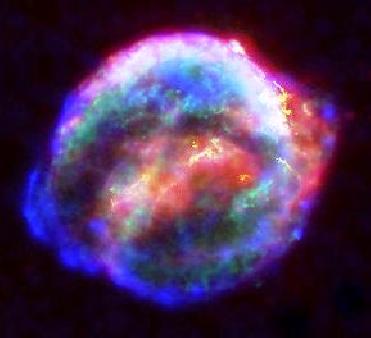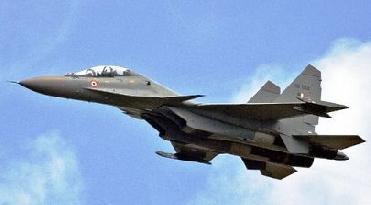
A supernova is an explosion at the very end of the life of certain types of stars. Supernova were named because they were objects that appeared to be 'new' stars they are actually stars at the end of their lifecycle.
Supernova is known as one of the most energetic explosive at the end of a star's lifetime, when its nuclear fuel is exhausted and it is no longer supported by the release of nuclear energy. If the star is particularly massive, then its core will collapse and in so doing will release a huge amount of energy. This will cause a blast wave that ejects the star's envelope into interstellar space. The result of the collapse may be, in some cases, a rapidly rotating neutron star that can be observed many years later as a radio pulsar.
While many supernovae have been seen in nearby galaxies, they are relatively rare events in our own galaxy. The last to be seen was Kepler's star in 1604. This remnant has been studied by many X-ray astronomy satellites, including ROSAT. There are, however, many remnants of Supernovae explosions in our galaxy, that are seen as X-ray shell like structures caused by the shock wave propagating out into the interstellar medium.
Some famous remnant is the Crab Nebula which exploded in 1054. In this case a pulsar is seen which rotates 30 times a second and emits a rotating beam of X-rays (like a lighthouse). Another dramatic supernova remnant is the Cygnus Loop.
If the remnant of a supernova exceeds about three times the mass of the sun, its compression by gravity cannot be stopped. All the matter in the core is crushed together until it becomes a black hole, a body whose gravitational field is so powerful that not even light can escape its grasp. A black hole cannot be seen, but it can be detected by its effect on surrounding matter. As matter falls into a black hole, it releases huge quantities of energy into space.
The gradual enrichment of the interstellar medium with heavier elements has made subtle changes to how stars burn: the fusion process in our own Sun is moderated by the presence of carbon. The first stars in the Universe had much less carbon and their lives were somewhat different from modern stars. Stars which will be formed in the future will have even more of these heavier elements and will have somewhat different life cycles. So supernovae play a very important part in this chemical evolution of the Universe.
-Courtesy:
NASA
How Stuff Work Website
 Next Article
Next Article











The Indian Air Force, in its flight trials evaluation report submitted before the Defence Ministry l..
view articleAn insight into the Medium Multi-Role Combat Aircraft competition...
view articleSky enthusiasts can now spot the International Space Station (ISS) commanded by Indian-American astr..
view article